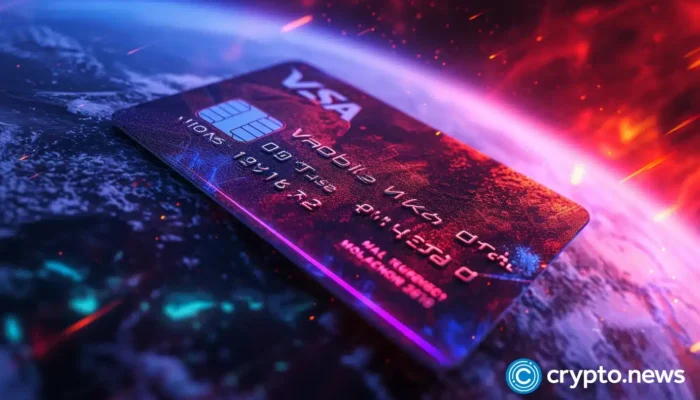Disclosure: The views and opinions expressed here belong solely to the author and do not represent the views and opinions of crypto.news’ editorial.
The phrase fair launch evokes images of grassroots communities with no preferential treatment for any specific group, equal access for all with no development or team incentives, and protocols born without hidden privilege. Yet, in 2025, fair launch has become less a principle and more a marketing slogan. The values that once guided this term, including equality and true alignment between users and builders, have been diluted to fit whatever allocation scheme the latest token distribution demands.
Summary
- Bitcoin is often hailed as the original “fair launch,” but early mining concentration, wealth asymmetry, and halvings show its fairness was imperfect.
- DeFi’s 2020 “fair launch” hype collapsed into yield farms, forks, and insider windfalls — fairness meant little beyond “no ICO.”
- Most modern blockchains rely on presales and insider allocations, creating deferred inflation and undermining fairness.
- True fair launch requires equal treatment of contributions across time, no insider carve-outs, and value built on real utility rather than token speculation.
Was Bitcoin a fair launch?
When Satoshi Nakamoto published the Bitcoin (BTC) whitepaper in 2008, the promise was clear. It was positioned as a peer-to-peer electronic cash system that would serve as a better global means of payment. More than fifteen years later, that vision has not materialized. Instead of becoming a widely used medium of exchange, Bitcoin has transitioned to an investment asset, a kind of digital gold promising outsized capital gains.
Bitcoin is often held up as the original fair launch with no VC round involved, no foundation treasury, or presale. But peel back the mythology and cracks start to appear. For its first year, Satoshi controlled the vast majority of the network, some estimates put it at 70%. Early mining was effectively a premine, and the small number of participants could accumulate an enormous supply before the concept of “crypto market” even existed.
Why then do we still treat Bitcoin as a fair launch? Because Satoshi never moved his coins, and no insider cash-out distorted the distribution. For all its imperfections, Bitcoin’s economics aligned with its product. Each block was a unit of incorruptible record, and participants were rewarded equally for producing them. But scarcity turned it into digital gold, undermining its supposed role as peer-to-peer cash. Fixed supply guaranteed that latecomers could never stand on equal footing with early miners. The model essentially planted wealth asymmetry into the network’s DNA. The halving mechanism reinforced this divide, presenting a dual reality: on one hand, a long-term promise that network fees would sustain security once block rewards diminish; on the other, a structural rule that miners receive half the reward every cycle, meaning the system itself never treated participants equally over time.
The DeFi summer mirage
Fast forward a decade, and fair launch had become fashionable again. In the 2020 “DeFi Summer,” projects like Yearn Finance proudly declared their tokens fairly distributed. Anyone could farm liquidity and earn governance rights. Yet, providing liquidity was not a universal activity, but more of a financialized business product.
Worse, these “fair launches” were vulnerable to vampire attacks. SushiSwap forked Uniswap; PancakeSwap cloned Sushi. Each “fair” fork pumped liquidity by promising higher yields. Early insiders of each iteration were rewarded again and again, and again. Fair launch, as defined in DeFi, was neither fair nor defensible. It created a race of forks and food coins, where fairness meant little more than “we didn’t do an ICO.”
The presale standard
By now, the industry has shifted the definition again. Ethereum’s ICO in 2015 raised over $18 million by selling 72 million ETH, more than half of the current supply in circulation, before a block was ever mined. Solana (SOL), Aptos (APT), and Sui (SUI) repeated the pattern, raising hundreds of millions and allocating vast percentages to insiders. After TGE, these allocations are not counted as part of inflation, even though they essentially represent delayed inflation, because these allocations become part of the circulating supply only after cliff unlocks.
Users are not buying into a network; they are buying out early backers. “Fair launch” in this world has been reduced to a threshold; 5% insider allocation is now considered fair enough. But whether 5% or 35%, the principle is compromised.
The real meaning of ‘fair launch’
Fair launch was never about percentages on a cap table. It is about alignment of values, and about whether the smallest unit of contribution to a network is rewarded equally, whether you joined on day one or in ten years. Bitcoin’s smallest unit is a block. In identity networks, it might be a verified human. In other systems, it could be compute or bandwidth. The test is simple: does the network treat all contributors as equals in perpetuity?
Other questions helping to determine whether the project qualifies are: Is the smallest unit of contribution clearly defined and open to any human, not just capital providers? Are equal contributions rewarded equally across time? Are insider/team/investor allocations zero at the network layer (not just “<5%”)? Is on-chain inflation inclusive and auditable, with no off-chain overhang (vests/unlocks) needed to sustain development?
This is another reason why Bitcoin’s launch was not fair enough. Companies with capital compete with indie miners, making it very costly to try to join this side of the market. When it comes to values, Bitcoin has a built-in mechanism that makes it more centralized over time.
By that standard, almost every project today fails. Presales and foundation treasuries create deferred inflation that users must buy out, and “liquidity mining” fair launches restrict participation to capital-bearing specialists. Unlock schedules and hard-code exit liquidity into the future. They launch not to serve a community, but to serve the balance sheets of insiders.
For a true fair launch, the core protocol has to stand on its own and deliver genuine utility, independent of token price movements. When it comes to accruing value, founders and developers should be able to earn profits from adjacent ecosystems, whether it’s services or businesses layered on top of the network. The upside should come from building things people genuinely want as opposed to relying on the continued appreciation of the token. When a protocol’s survival depends on token demand, fairness is already compromised.
In the end, fair launch is the only foundation on which durable crypto networks can be built. A network that privileges insiders will always fracture, because someone can always fork the code and promise a slightly better deal. But when fairness is absolute and product value is the driver, there is nothing left to fork against. Communities stay because they are treated as equals, not because of speculative incentives. Fair launch, then, is the social contract of crypto, a commitment that no matter when you arrive, you stand on equal ground with every other participant.

Kirill Avery
Kirill Avery is a self-taught coder since the age of 11. He built Europe’s largest consumer social app at 16 (15M users). The youngest engineer at VK.com and the youngest solo founder accepted into Y Combinator.




